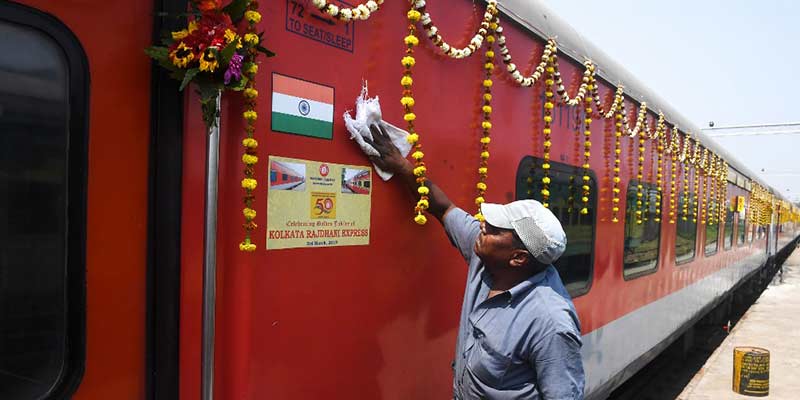- India
- Sep 25
Railways adopt HOG system in trains
The Indian Railways is going to replace the two generator cars placed on either side of train sets with the Head On Generation (HOG) system, which will make journeys less noisy and eco-friendly.
Under the HOG system, power is drawn from an overhead electric supply system. It will transform the way ACs run and power is supplied to coaches. The technological transformation will ensure foreign exchange savings worth Rs 1,400 crore per year.
Currently, the cost of power is over Rs 36 per unit and with HOG it will available at Rs 6 per unit.
An official said that Railways has planned planned to convert all LHB (Linke Hofmann Busch) trains to adopt the eco-friendly HOG system within this year.
The power generator cars used to make huge noise and emit fumes. The two generator cars will be replaced with one standby silent generator car for emergency situations.
In place of the other car, there will be LSLRD (LHB Second Luggage, Guard & Divyaang Compartment). This LSLRD will also have the capability to convert power from the overhead supply to be utilised in the entire train while providing space for luggage guard room and additional passengers.
The official said 342 trains have already been converted into HOG, which has helped the national transporter save Rs 800 crore approximately per year.
By the end of the year, 284 more trains will be converted into HOG.
Background
Head On Generation (HOG) is the electrical power supply system where electrical power for catering hotel load of train, which includes train lighting, air conditioning, fannage and other passenger interface requirement working on electrical power supply.
It is the most widely used power supply system by railways the world over. The power in this system is received from the locomotive. With the introduction of this scheme, heavy underslung power generating equipment gets eliminated. Further it also reduces the use of diesel sets employed in power cars in End On Generation (EOG) system.
In 1996, the Indian Railways entered into an agreement with German company Linke Hofmann Busch. The LHB coaches have been designed to run on EOG system with two power cars employing two diesel generator sets on either end.
From 2000 to 2017, railway production units used to manufacture both LHB and ICF coaches. LHB coaches continued to be manufactured with EOG power supply system employing two power cars at either end. Whereas ICF coaches with self-generating technology employing belt driven alternators in bogies continued to be manufactured.
The cost of electricity generation from diesel generator set and in self-generating coaches is very high, resulting in a spike in diesel consumption and substantial operating expenditure. In 2017, a decision was taken for complete switch over to LHB technology.
After this decision, the adoption of HOG conversion has been taken in mission mode to complete the work in a time-bound manner.
All new coaches from production units are HOG compliant.
The conversion work has been allotted to zonal railways. This will enable noise-free and eco-friendly travel for passengers.

